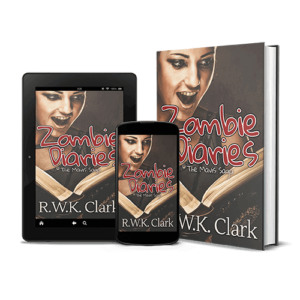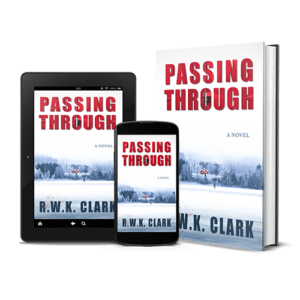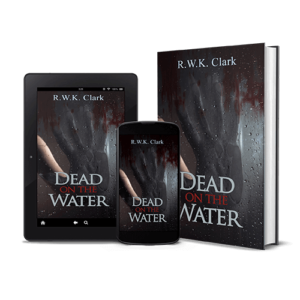Character and Psychology are the two most crucial elements that breathe life into fiction, transforming flat words on a page into living, breathing individuals who feel real to the reader. At the heart of every great novel lies a character—or a cast of characters—so real and psychologically complex they feel as if they could walk off the page.
Unleash Character and Psychology to Elevate Your Fiction
The technical brilliance of plot and pacing, while crucial, can fall flat without a deep understanding of human psychology. It’s a widely accepted principle in the publishing world that readers don’t just follow a story; they connect with the emotional journey of the characters within it. By delving into the inner workings of your characters, you can create a narrative that is not only compelling but also resonates with the profound and universal truths of the human experience.
Dominate Your Story with Masterful Character and Psychology
This guide will explore the essential elements and techniques writers use to craft psychologically rich characters. We’ll move beyond simple archetypes to build multifaceted individuals driven by complex motivations, inner turmoil, and hidden fears. From the deliberate use of internal monologue to the subtle art of subtext, mastering these techniques will help you create fiction that is both unforgettable and deeply impactful. Research into reader retention shows that the psychological relatability of a protagonist is one of the strongest factors in a reader’s decision to finish a book and seek out a sequel, making these skills invaluable for any serious writer.
Building the Inner Life of a Character
Before a character can act, they must be. Their internal world is the foundation of their external journey. By understanding their motivations, flaws, and hidden depths, you can create a persona that feels authentic and believable.
–↓–“A word from our sponsor”–↓– –↑–“Ads made this possible”–↑–
Character Arcs and Inner Turmoil
A character arc is the journey of transformation a character undergoes throughout the story. This change is driven by their inner turmoil—the psychological conflict between their desires and their fears, their beliefs and their reality.
- Explanation: Creating a complex character arc involves more than simply having a character change from “bad” to “good.” It’s about exploring the psychological friction that forces that change. This inner turmoil is the engine of a character’s journey. It’s the constant battle between their ingrained flaws and the external pressures they face. Without this internal conflict, a character’s actions can feel unmotivated and their transformation, unearned. Psychologists know that people rarely change without significant internal struggle, and mirroring this reality in fiction makes a character’s growth believable and deeply relatable.
- Example: Dr. Elias Thorne begins the story as a renowned but arrogant surgeon, obsessed with his reputation. His inner turmoil stems from a deep-seated fear of failure, a trauma from a past mistake he has never acknowledged. The inciting incident forces him to treat a patient whose rare condition mirrors his past failure. His character arc isn’t just about him becoming a “better person”; it’s about him being forced to confront his arrogance. His inner turmoil manifests as sleepless nights, self-doubt, and snapping at his staff. He struggles between his pride, which tells him to stick to his old, established methods, and his guilt, which forces him to seek out a new, experimental treatment. The arc concludes when he finally admits his past mistake to his mentor, not just to save the patient but to finally free himself from the psychological weight he has carried for years.
Internal Monologue
Internal Monologue is the direct representation of a character’s thoughts, feelings, and consciousness. It’s a direct window into their mind, providing a level of intimacy that cannot be achieved through dialogue or action alone.
- Explanation: This technique is invaluable for revealing a character’s true feelings, especially when they are at odds with their outward behavior. It allows a writer to show, rather than tell, the character’s psychological state. Internal monologue can expose fear behind a brave facade, doubt behind a confident statement, or a secret desire that drives the character’s actions. It’s also a powerful tool for pacing, allowing the writer to slow down a moment of high tension to explore the character’s psychological reaction in real-time.
- Example: As a detective faces down a dangerous suspect, their dialogue is sharp and commanding: “Put the gun down. Now.” However, their internal monologue reveals the true psychological state of panic: My hand is shaking. My heart is a drum against my ribs. I’ve only got three bullets left. What if this is the end? I should have told my sister I loved her. The contrast between the character’s outer composure and their inner turmoil creates a profound sense of tension and vulnerability. This technique not only makes the character more human but also allows the reader to share in their fear, making the scene more impactful.
Vulnerability and Trauma
A character’s vulnerability and past trauma are often the keys to their deepest motivations. Giving a character a psychological wound from their past can explain their flaws, their fears, and their inner turmoil.
–↓–“A word from our sponsor”–↓– –↑–“Ads made this possible”–↑–
- Explanation: Few people are without psychological wounds, and giving your characters a history of trauma makes them more authentic and relatable. This vulnerability is not a weakness; it’s a source of conflict and a powerful engine for their character arc. A character’s past trauma explains why they might be overly cautious, quick to anger, or unwilling to trust others. It gives their present-day struggles a deeper meaning, as they are not just fighting the external antagonist, but also the ghosts of their past.
- Example: In a gothic mystery, the protagonist, Eleanor, is a brilliant private investigator but is intensely claustrophobic. Her vulnerability and trauma stem from a childhood incident where she was trapped in a cellar during a fire, an event she has repressed. This trauma manifests in her aversion to confined spaces and her tendency to keep people at arm’s length. When the central mystery leads her to a suspect hiding in a series of underground tunnels, her past trauma becomes a direct obstacle. She must not only solve the case but also confront the source of her deepest fear. This conflict elevates her from a simple detective to a complex character fighting a battle on two fronts: the physical and the psychological.
Manipulating Perception and Reality
Some of the most engaging fiction plays with what the reader—and the characters—perceive as real. These advanced techniques can create a disorienting, suspenseful, and ultimately unforgettable reading experience.
The Unreliable Narrator
An Unreliable Narrator is a narrator whose version of events is compromised due to bias, a flawed memory, or a deliberate lie. This forces the reader to question everything they read, turning them into a detective within the story.
- Explanation: This is a powerful tool in psychological thrillers, as it blurs the line between a character’s subjective experience and objective reality. The narrator’s unreliability can be revealed gradually, often through subtle contradictions or inconsistencies in their story. Psychologists confirm that our memories are not static recordings but malleable constructs, and an unreliable narrator taps into this very human fallibility. The payoff of this technique comes when the reader finally pieces together the truth, often discovering a twist that redefines the entire narrative.
- Example: The protagonist, Miles, narrates a story about his paranoid neighbor, a man he is convinced is a killer. His narration is filled with detailed accounts of the neighbor’s suspicious behavior—the strange noises, the late-night digging in the garden, the furtive glances. He details his investigation, painting a clear picture of a psychopath. However, throughout the narrative, the writer subtly includes contradictory details: Miles’s doctor mentions his prescription for severe anxiety, a police officer dismisses his claims, and a friend repeatedly mentions Miles’s recent emotional breakdown. The final twist reveals that Miles is the killer, having been driven to madness by guilt. His entire narrative was a delusion, a projection of his own crimes onto his innocent neighbor, making him a profoundly unreliable narrator.
Moral Ambiguity
Moral Ambiguity is the deliberate blurring of the lines between “good” and “evil.” A morally ambiguous character is one who operates in a morally gray area, with motivations that are not easily categorized as purely selfless or purely selfish.
–↓–“A word from our sponsor”–↓– –↑–“Ads made this possible”–↑–
- Explanation: This technique creates a more realistic and thought-provoking narrative. In real life, heroes can have deep flaws, and villains can have noble intentions. By presenting characters with conflicting morals, writers challenge the reader to make their own judgments. This forces a deeper engagement with the character and their decisions, making the story more complex and layered. The reader can’t simply root for the “good guy” without question; they must grapple with the difficult choices a character makes.
- Example: In a spy novel, the protagonist, Agent Eva Rostova, is the “hero,” but her methods are ethically questionable. She uses blackmail, manipulates innocent people, and occasionally sacrifices her own agents for the greater good. Her antagonist, a disgraced former agent, is driven by a genuine desire to expose corruption within the agency and bring about justice. The reader is presented with a morally ambiguous scenario: is Eva a hero for saving her country at any cost, or is she a monster? Is her antagonist a villain, or a genuine moral crusader? This forces the reader to question their own ethical compass and the nature of “right” and “wrong.”
The Descent into Madness
The Descent into Madness is a narrative arc that traces a character’s gradual psychological unraveling. This can be driven by a traumatic event, a consuming obsession, or prolonged isolation.
- Explanation: This technique is particularly effective in psychological thrillers and horror, where the loss of sanity is a source of terror. It’s not a sudden switch but a slow, creeping process marked by paranoia, hallucinations, and a complete breakdown of rational thought. A writer can show this descent through fragmented language, shifts in perception, and a growing disconnect from reality. The psychological impact is profound because the reader witnesses the character losing their most fundamental anchor—their own mind.
- Example: A scientist, Dr. Alistair Finch, becomes obsessed with a revolutionary new energy source. His descent into madness begins subtly. He starts working longer hours, neglecting his family, and obsessing over minor setbacks. He begins hearing whispers that only he can hear, which he dismisses as stress. The whispers grow into voices, and he begins to hallucinate shadowy figures in his lab. His journal entries become fragmented, filled with nonsensical equations and frantic scribbles. The climax arrives not with an external threat, but with the terrifying realization that the “energy source” he has been communicating with is a figment of his imagination—a manifestation of his own fracturing psyche, and the true horror is the loss of his own mind.
On sale products
Box Office Butcher
Original price was: $16.99.$12.99Current price is: $12.99.Death Squad
Original price was: $16.99.$4.99Current price is: $4.99.Passing Through
Original price was: $16.99.$12.99Current price is: $12.99.
The Power of Relationships and Conflict
Characters are not islands; their psychology is often defined by their relationships with others. The following techniques use these interactions to create conflict, reveal character, and deepen the narrative.
Character Foils
Character Foils are characters who contrast with each other to highlight specific traits, flaws, and psychological states. By placing two opposites side-by-side, a writer can make the qualities of each stand out more clearly.
- Explanation: This is a classic literary device for characterization. A foil can be a protagonist’s rival, a sidekick, or even an antagonist. For example, a cautious character might be paired with a reckless one. This contrast doesn’t just create conflict; it allows the reader to see the protagonist’s strengths and weaknesses in a new light. It can also be used to explore a central theme, such as a foil who represents a moral choice the protagonist rejects.
- Example: In a crime novel, the protagonist is Detective Lena Cruz, a brilliant but emotionally guarded investigator who relies on logic and meticulous evidence. Her character foil is Detective Mark Jensen, an impulsive, empathetic cop who trusts his gut feelings and has an almost supernatural ability to get suspects to talk. Their contrasting methods create constant friction and conflict. While Lena sees Mark’s approach as reckless, his emotional intelligence often unlocks breakthroughs she couldn’t. This dynamic not only drives the plot forward but also highlights Lena’s own emotional isolation, forcing her to confront the limitations of her purely logical approach.
Thematic Doubles
Thematic Doubles are two characters who mirror or reflect aspects of each other’s personalities or struggles, often to explore a central theme or to show an alternate path for the protagonist.
–↓–“A word from our sponsor”–↓– –↑–“Ads made this possible”–↑–
- Explanation: Unlike foils who are opposites, thematic doubles are often similar, but with one key difference that reveals a different outcome. They might share a similar background or face the same moral dilemma, but their choices lead them down completely different paths. This technique is powerful for exploring themes of destiny, choice, and identity. A thematic double can serve as a warning to the protagonist or a glimpse of what could have been, adding a profound layer of introspection to the narrative.
- Example: In a fantasy novel, the protagonist, Elara, is a young sorceress who has a powerful but dangerous gift she is struggling to control. Her thematic double is the kingdom’s villain, a sorceress named Malia, who was once a prodigy with the exact same gift. While Elara tries to control her power for good, Malia succumbed to its corruption. Their stories are a mirror: they both faced social rejection, both were tempted by forbidden magic, and both were offered a path to immense power. Malia represents the dark path Elara could have taken, making Elara’s struggle against her own dark side all the more tense and meaningful.
Subtext in Dialogue
Subtext in Dialogue is the meaning that is not explicitly stated in a conversation. It’s the psychological tension, hidden intentions, and unspoken emotions that exist beneath the surface of what characters are saying.
- Explanation: People rarely say exactly what they mean, especially in moments of high emotional stakes. Subtext is the most common way writers reveal a character’s true psychological state without resorting to direct exposition. It’s what makes dialogue feel realistic and nuanced. A character’s fear, anger, or love can be revealed through what they leave unsaid, a change in their tone, or their use of loaded words. Mastering subtext allows a writer to create dialogue that is both economical and deeply revealing.
- Example: Two estranged siblings, separated after a traumatic event, meet for the first time in years. On the surface, their conversation is polite and mundane. One asks, “How’s your new job?” to which the other replies, “It’s fine.” The Subtext in their Dialogue is where the real story lies. The polite questions are a shield to hide years of pain and unresolved anger. When one of them asks, “Do you ever think about the old house?” they aren’t just asking about a building; they are asking about the shared trauma they’ve never discussed. The unspoken question hanging in the air is, Do you remember what happened that night? Do you blame me? This unsaid conversation is what gives the scene its emotional weight.
Exploiting Human Fear and Obsession
The most powerful stories often tap into our deepest, most primal psychological triggers. By focusing on fear, isolation, and obsession, writers can create narratives that are both viscerally thrilling and deeply unsettling.
Delving into Human Fear
Delving into Human Fear is the deliberate exploration of universal anxieties, such as the fear of the unknown, the fear of losing control, or the fear of being forgotten.
–↓–“A word from our sponsor”–↓– –↑–“Ads made this possible”–↑–
- Explanation: A writer who understands human psychology knows that a story isn’t scary because of a monster; it’s scary because it taps into a fundamental fear that a reader already has. The most effective horror and psychological thriller writers explore fears that are deeply rooted in our psyche. By placing a character in a situation that preys on these fears, the writer creates an immediate and powerful emotional connection with the reader. The fear of being alone, for example, is more potent than the fear of a specific antagonist.
- Example: In a sci-fi horror novel, the crew of a spaceship finds a derelict vessel with all its crew missing. The monster is not immediately shown. Instead, the story delves into human fear by creating a sense of psychological horror. The main character begins hearing faint whispers and seeing brief, impossible movements in the periphery of his vision. The ship’s AI starts giving them contradictory orders. The fear doesn’t come from a physical threat, but from the terror of losing one’s mind, of not being able to trust their own senses, and of being trapped in a small space with an unknown presence. The real horror is the psychological isolation and the unraveling of reality, a fear far deeper than any monster.
Psychological Isolation
Psychological Isolation is the state of a character feeling completely alone, even when surrounded by others. This technique is about preying on the primal human fear of loneliness and being misunderstood.
- Explanation: This is distinct from physical isolation. A character can be in a crowded room but feel utterly alone because they are unable to connect with anyone. This can be caused by trauma, a secret they are keeping, or a fundamental difference in their worldview. Psychological isolation is a powerful source of internal conflict and can be a driving force for a character’s actions, whether they are desperately trying to connect or deliberately pushing people away.
- Example: The protagonist, a war veteran, returns home from combat but finds he can’t relate to his family or friends. They can’t understand the horrors he’s seen, and he can’t understand their mundane, everyday concerns. He is physically present in every family dinner and social gathering, but he feels utterly alone and disconnected. The psychological isolation drives him to seek out dangerous, high-risk situations, not for the thrill, but to find a feeling of connection with the life he once knew. This leads to a new kind of inner turmoil, forcing him to face the fact that the person who came home is not the person who left.
Obsession
Obsession is a character’s consuming preoccupation with a person, object, or idea. This is a powerful psychological trait that can motivate a character’s entire journey, often leading to their downfall or a transformative breakthrough.
- Explanation: An obsession can be both a character’s greatest strength and their most dangerous weakness. It gives them a clear, relentless purpose that drives their actions. A character’s obsession can be a desire for revenge, a consuming love, a quest for a specific object, or a need to uncover a hidden truth. The psychological tension comes from the character’s inability to let go, even when it is harming them or those around them.
- Example: An academic named Dr. Evelyn Reed becomes consumed by a lost, ancient manuscript. Her obsession begins as a scholarly pursuit but quickly escalates. She neglects her career and her relationships, spends all her money hiring specialists, and begins to believe that other academics are conspiring against her. Her pursuit leads her to a remote archaeological site, but her obsession has twisted her judgment. She ignores the clear signs of danger and puts her life at risk, believing that the manuscript holds a secret so great that no sacrifice is too big. The psychological tension comes from the reader witnessing her relentless pursuit, wondering if her obsession will lead to a revolutionary discovery or to her own self-destruction.
Characterization Through Dialogue
Characterization Through Dialogue is the technique of revealing a character’s personality, background, and psychological state through the way they speak. This includes their word choice, speech patterns, and what they choose to say and not say.
–↓–“A word from our sponsor”–↓– –↑–“Ads made this possible”–↑–
- Explanation: Dialogue is one of the most direct ways to show, rather than tell, who a character is. A character’s vocabulary can reveal their education level, their use of slang can hint at their social circle, and their sentence structure can suggest their emotional state. A character who uses short, clipped sentences might be a man of action, while a character who speaks in long, philosophical sentences might be an academic. This technique is about making every word count, ensuring that what a character says is not just a delivery of information but a reflection of their inner self.
- Example: Two characters, a grizzled old sea captain and a young, inexperienced reporter, are in a tense confrontation. The captain’s dialogue is filled with terse nautical terms and pragmatic, no-nonsense language: “Get below, the squall’s comin’. We’ve no time for your damned questions.” The reporter’s dialogue, in contrast, is filled with breathless, overly formal questions: “But captain, can you not provide an estimated time of arrival?” This difference in their language immediately establishes their personalities and psychological states. The captain’s speech reflects his pragmatic, survival-oriented mindset, while the reporter’s reveals his naivete and his focus on the superficial, making their conflict believable and their dynamic compelling.
Lies and Deception
Lies and Deception are the intentional use of falsehoods to mislead other characters, which is a powerful tool for creating conflict, revealing a character’s true motivations, and building suspense.
- Explanation: When a character lies, it immediately raises the stakes and adds a layer of psychological complexity to the narrative. A lie can be a small, desperate act to protect a loved one, or it can be a grand, malicious deception to gain power. The psychological tension comes from the reader knowing a character is lying, or from the slow, agonizing process of a character trying to maintain a complex web of lies. This can be used to show a character’s moral weakness or to create a thrilling game of cat and mouse.
- Example: The protagonist, a brilliant corporate strategist, is secretly a whistleblower. She lies to her family about her long work hours, telling them it’s to get a promotion, when in reality it’s to gather evidence against her company. She lies to her boss about her loyalty, feigning dedication while she is actively working against him. The lies and deception create a profound psychological burden for her. She is constantly on edge, paranoid that she will be discovered, and her relationships are strained by the secret she carries. The conflict isn’t just about her mission; it’s about the psychological toll of her deception.
By mastering these elements, writers can construct a narrative that is not only emotionally resonant but also psychologically rich, creating characters that are so deeply human they stay with the reader long after the final page.





